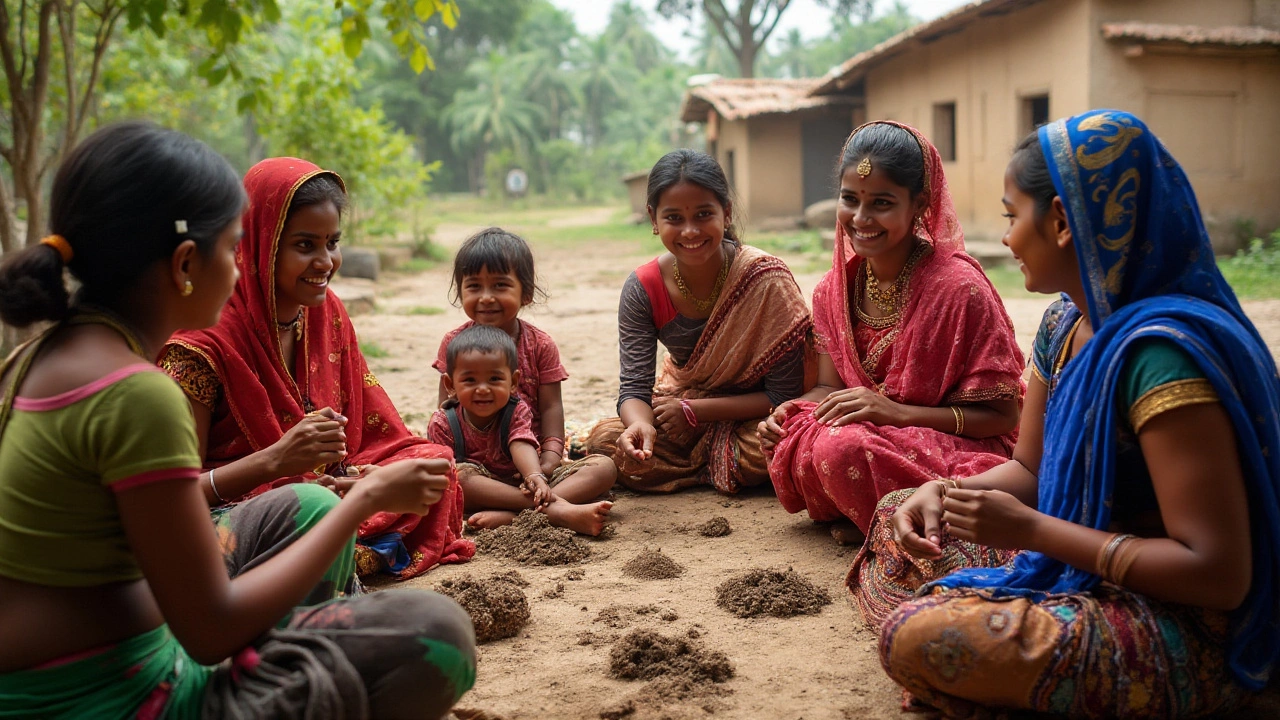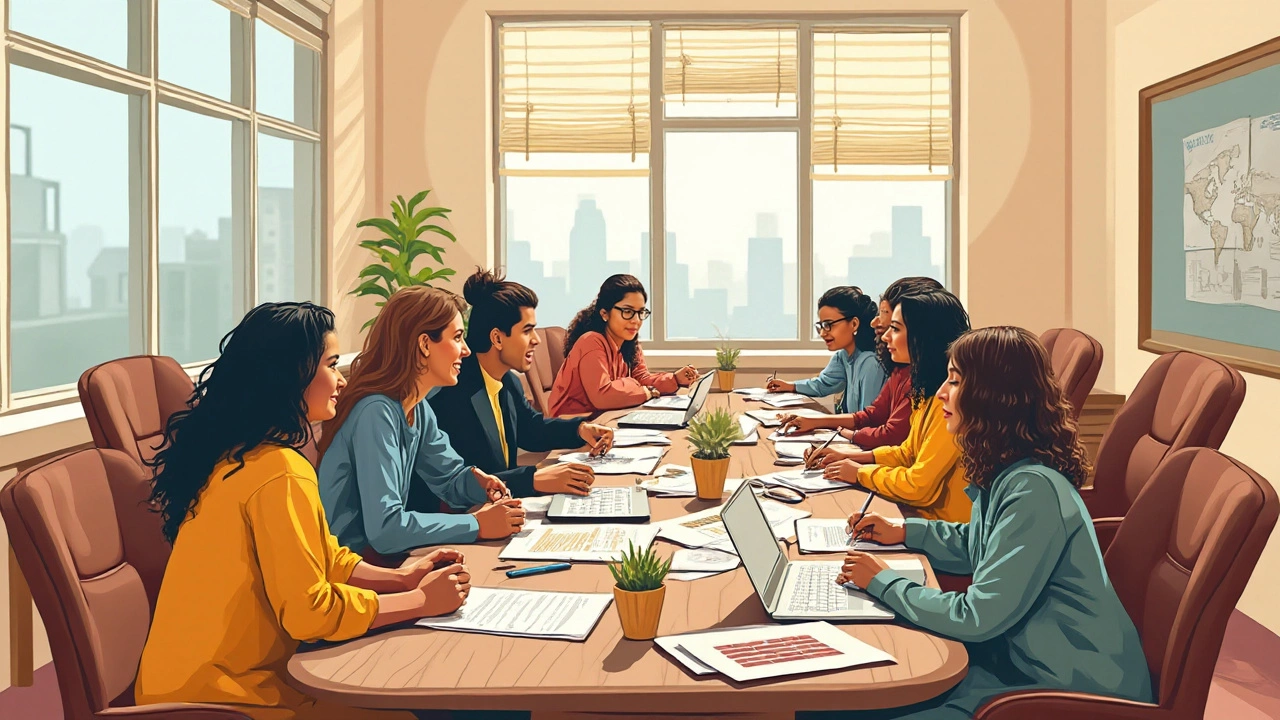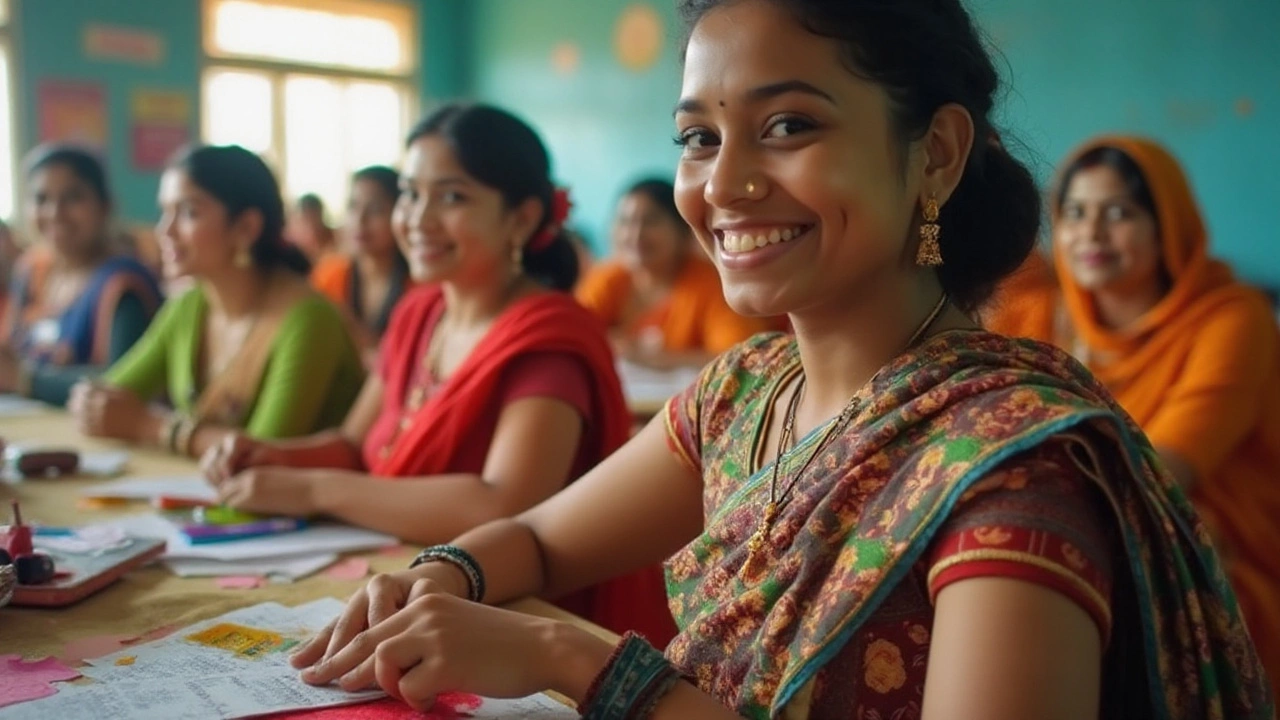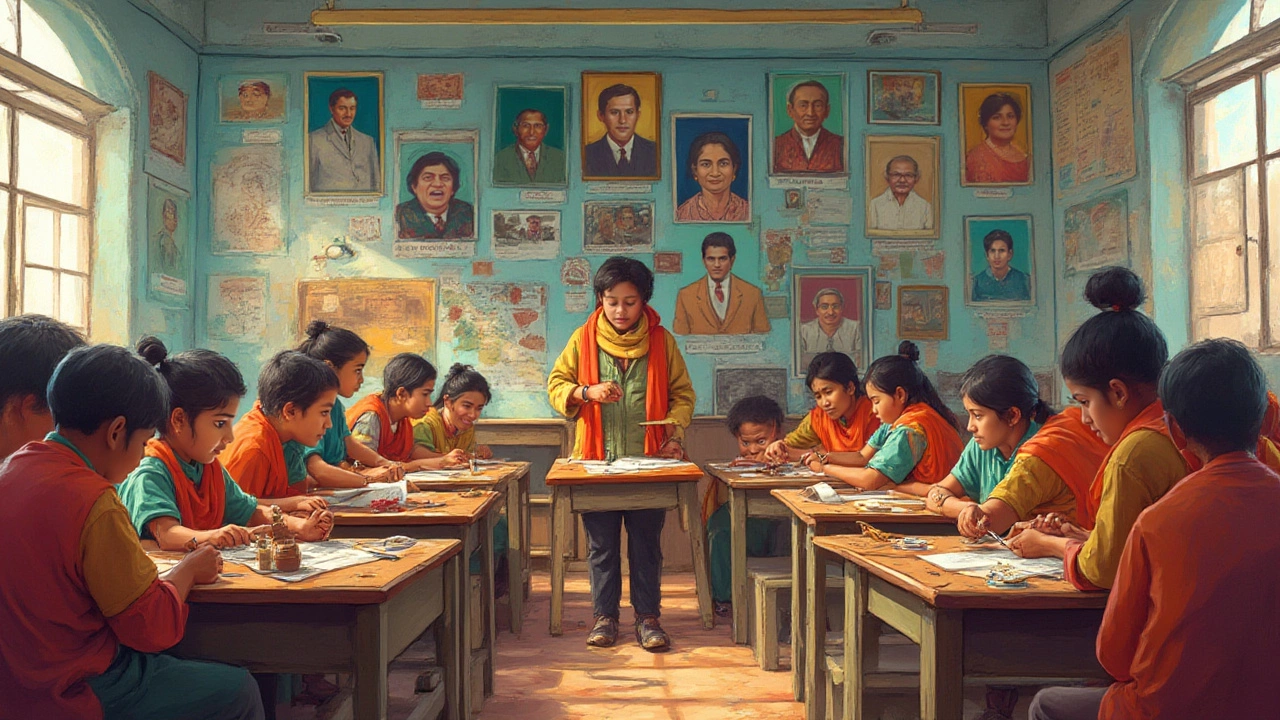The concept of vocational education as a means to promote gender equality has gained significant traction over the years. From its roots in early 20th-century educational reforms to its present-day applications, vocational training has provided a pathway for women to gain essential skills and improve their socio-economic standing. With varied courses ranging from traditional crafts to modern tech-driven disciplines, vocational education offers women the opportunity to break into industries that have historically marginalized their participation.
As more institutions and governments recognize the potential of this educational model, stories of success and empowerment abound. Women who have completed vocational training programs often find themselves better equipped to pursue careers of their choice, yielding both financial independence and personal fulfillment. Yet, despite its benefits, challenges remain, particularly in ensuring equal access to these opportunities and overcoming societal stereotypes that still persist.
By examining successful programs and the challenges faced, this article aims to shed light on the transformative power of vocational education for women. Readers will gain insights into how strategic implementation and support can lead to widespread benefits, not just for individuals, but for entire communities as well.
- The Historical Context of Vocational Training
- Impact of Vocational Education on Gender Equality
- Successful Case Studies of Women in Trades
- Overcoming Challenges in Implementing Vocational Programs
The Historical Context of Vocational Training
As we delve into the origins of vocational education, it's important to understand its roots as a fundamental pillar in shaping productive societies. The early 20th century marked a turning point, where industrialization called for a skilled workforce able to manage the machinery and technology of the day. This gave rise to vocational schools, initially tailored towards men, grooming them for roles in burgeoning industries. As time progressed, the realization dawned on educational reformers that women too required these skills to participate fully in the workforce.
During the 1920s and 1930s, various movements worldwide began to advocate for the inclusion of women in vocational training schemes. This was particularly significant during and after the world wars, when women stepped into roles that were traditionally male-dominated. Educational theorists like John Dewey pushed for experiential learning, which vocational education embodied. Dewey emphasized learning by doing, which remains a cornerstone of vocational training today. His philosophy laid the groundwork for curricula that combined academic learning with practical skills – a model that empowered countless women to enter trades previously inaccessible to them.
The mid-century saw further developments as governments started recognizing the economic benefits of gender inclusivity in vocational sectors. In the United States, for example, the Vocational Education Act of 1963 broadened the scope of vocational programs to encourage women's participation. By this time, industries had begun to change, incorporating more technical and office-based roles, many of which women began to fill. These shifts were echoed globally, as countries like Germany and Japan also expanded their vocational education systems to be more inclusive. “Education is the most powerful weapon which you can use to change the world,” Nelson Mandela once articulated, reflecting the enduring belief in education as a transformative force.
The latter half of the 20th century into the 21st has seen continued advocacy and policy reforms aimed at increasing women's access to vocational training. Organizations across the world, including UNESCO and the International Labour Organization, have produced numerous studies showcasing the positive impact of training women in practical skills. A notable example from India includes the government-backed initiatives aimed at providing skill training in textiles, electronics, and IT, traditionally male-centric domains, which have successfully bolstered women's economic roles, resulting in improved livelihoods and broader societal changes.
Today, vocational education stands as a thriving ecosystem, continually evolving to meet the needs of a dynamic global workforce. As more women participate, we witness a multiplier effect, where women not only enter new industries but also drive innovation and leadership within them. This historical journey underscores that the fight for gender equality through vocational training has been a long one, marked by incremental victories and ongoing challenges. Ensuring access and quality for women in vocational education today remains as crucial as the visionaries who initially championed it envisioned decades ago.

Impact of Vocational Education on Gender Equality
Vocational education, with its practical approach to skill-building, has emerged as a beacon of hope for gender equality across the globe. This type of education serves as a powerful tool in bridging the gender gap by equipping women with the skills needed for the workforce, contributing to economic independence and societal advancement. Historically, women have faced barriers in gaining access to education, especially in technical and vocational fields. Yet, these barriers are steadily being dismantled through proactive policies and awareness campaigns that highlight the significance of vocational training.
The impact is substantial when women gain access to vocational education. It not only empowers them economically but also boosts their confidence and self-reliance. By learning a trade or acquiring a specialized skill, women can confidently enter industries previously dominated by men. This shift not only helps in breaking gender stereotypes but also fosters a diversified workforce that can lead to more innovative and productive environments. According to a study by the International Labour Organization, countries emphasizing vocational training for women have shown marked improvements in economic performance and gender parity indices.
Apart from economic empowerment, vocational education contributes significantly to societal change. Educational opportunities in vocational fields provide women with the chance to challenge and change ingrained cultural attitudes. As more women infiltrate various sectors, they become role models and mentors for younger generations, inspiring them to pursue similar paths. The ripple effect created by vocational education is immense, as it not only benefits the individual but positively impacts families and communities at large. This is reflected in increased family income levels, better health outcomes, and improved educational achievements among children.
"Vocational training is not just about preparing individuals for the workforce; it's about opening doors to new opportunities and challenging the status quo," says Michelle Bachelet, former Executive Director at UN Women.
Challenges remain, however, in ensuring equal access to vocational education for all women, especially those in rural or marginalized communities. Institutions and governments need to address issues such as the availability of programs, cultural resistance, and financial constraints to ensure widespread participation. It requires a collective effort from stakeholders across the board, including educational institutions, policymakers, and private enterprises, to create a more inclusive framework for vocational education. When these elements align, vocational training can significantly reduce gender disparities and promote a more equitable society.
As more countries realize the extensive benefits of integrating vocational skills education into their national gender equality strategies, the world moves a step closer to achieving true equality. For women, gaining professional skills translates to greater autonomy, higher self-esteem, and the ability to contribute more actively to the economy. With sustained efforts, vocational education will continue to be a driving force in reshaping the narrative on gender roles and opening new prospects for women's empowerment across the world.

Successful Case Studies of Women in Trades
The journey toward empowering women through vocational education is rich with inspiring stories and ample evidence of success. Across the globe, women have proven their capability and resilience by mastering trades traditionally dominated by men. One notable example is the women in India who have excelled in carpentry and construction. In the state of Kerala, a cooperative of female carpenters known as 'Unit for Women' has achieved remarkable success. These women have not only mastered intricate woodworking skills but also managed to compete on an equal footing with their male counterparts. Their journey is a testament to what women can achieve when given equal opportunities and the right resources.
Another inspiring story comes from Canada, where a program called 'Women Building Futures' has been instrumental in providing women with the skills needed to enter the construction industry. The program offers comprehensive training in various trades, ranging from electrical work to plumbing. Graduates of this program have gone on to secure well-paying jobs, significantly improving their economic standing. A study conducted by the organization revealed that over 80% of the participants found employment within a few months of completing their training. This outcome reflects not only the quality of the training but also the increasing demand for skilled workers in these industries.
In the United States, the Rosie the Riveter initiative has been revitalized to encourage more women to enter the manufacturing and technical trades. By providing scholarships and apprenticeships, the initiative has successfully paved the way for women to excel in fields like welding and machining. One participant, Jane Doe, who had no prior experience in trades, now heads a team of skilled welders at a leading manufacturing firm. Her story underscores the significant impact of providing women with access to practical training and career development opportunities. A quote from Jane captures this impact beautifully:
"Vocational training changed my life, giving me confidence and a career I never imagined possible."
Looking at these case studies, it's evident that targeted initiatives and educational programs can significantly alter the landscape of women's empowerment in trades. The mutual benefits - for both women and the industries they join - include a broader range of skilled labor and the breaking down of gender barriers. The ripple effects of these success stories are seen not just in economic terms but also in societal attitudes towards women in these professions. It becomes clear that vocational training is not merely a set of skills but a catalyst for social change. For younger women and girls aspiring to build careers in trades, these stories hold the promise of a more equitable and fulfilling future.

Overcoming Challenges in Implementing Vocational Programs
Implementing vocational education as a strategy for gender equality is fraught with challenges, some deeply entrenched in societal norms, others in logistical hurdles. One of the primary issues is the pervasive gender bias in many regions. Despite progress, traditional views on gender roles often discourage women from pursuing skills training in certain fields, notably those dominated by men. Overcoming these societal barriers requires targeted awareness campaigns that highlight the success stories of women who have thrived in vocational careers. Local leaders and influencers can play a crucial role in reshaping perceptions, creating an environment where vocational choices are based on interest and aptitude rather than gender stereotypes.
Another critical challenge is the accessibility of vocational programs to women, especially in rural areas. Limited infrastructure, lack of transportation, and financial constraints can significantly hinder access. Solutions may include the development of mobile training units that travel to remote areas, or the introduction of online vocational education programs that allow women to learn from home. Scholarship programs and financial assistance can also play a pivotal role in eliminating economic barriers. Establishing partnerships between training institutes and industries can ensure that programs are aligned with market needs, making the prospect of employment post-training both viable and attractive.
Quality of education is also a significant factor in vocational training success. Inadequate funding and resources can lead to outdated curricula and insufficient training facilities. Engaging industry experts to provide real-world insights and practical workshops can enhance the learning experience and ensure that training remains relevant. An emphasis on continuous teacher training and curriculum updates is essential for maintaining high standards. Assessing the effectiveness of these programs through regular feedback from participants helps tailor courses to better suit learner needs and industry demands.
Institutional support is vital in overcoming challenges. Governments can prioritize vocational education for women through policy interventions and dedicated funding. Monitoring and evaluating vocational programs' impact on women's empowerment should be a key focus for policymakers. Establishing legal frameworks that promote gender equality in vocational education can further propel participation rates. Additionally, mentorship programs that pair trainees with successful women in vocational fields can provide guidance and inspiration, bridging the gap between learning and real-world application.
According to UNESCO, 'Empowering women through vocational education ensures not only their personal development but also the economic advancement of communities.'
In conclusion, while challenges remain, innovative solutions and dedicated efforts can significantly enhance the implementation of vocational programs for women. The collective efforts of government bodies, educational institutions, communities, and industries are crucial in fostering an inclusive educational landscape where women have equal opportunities to thrive. By addressing these challenges head-on, societies can harness the full potential of vocational education to promote lasting women's empowerment and gender equality.


